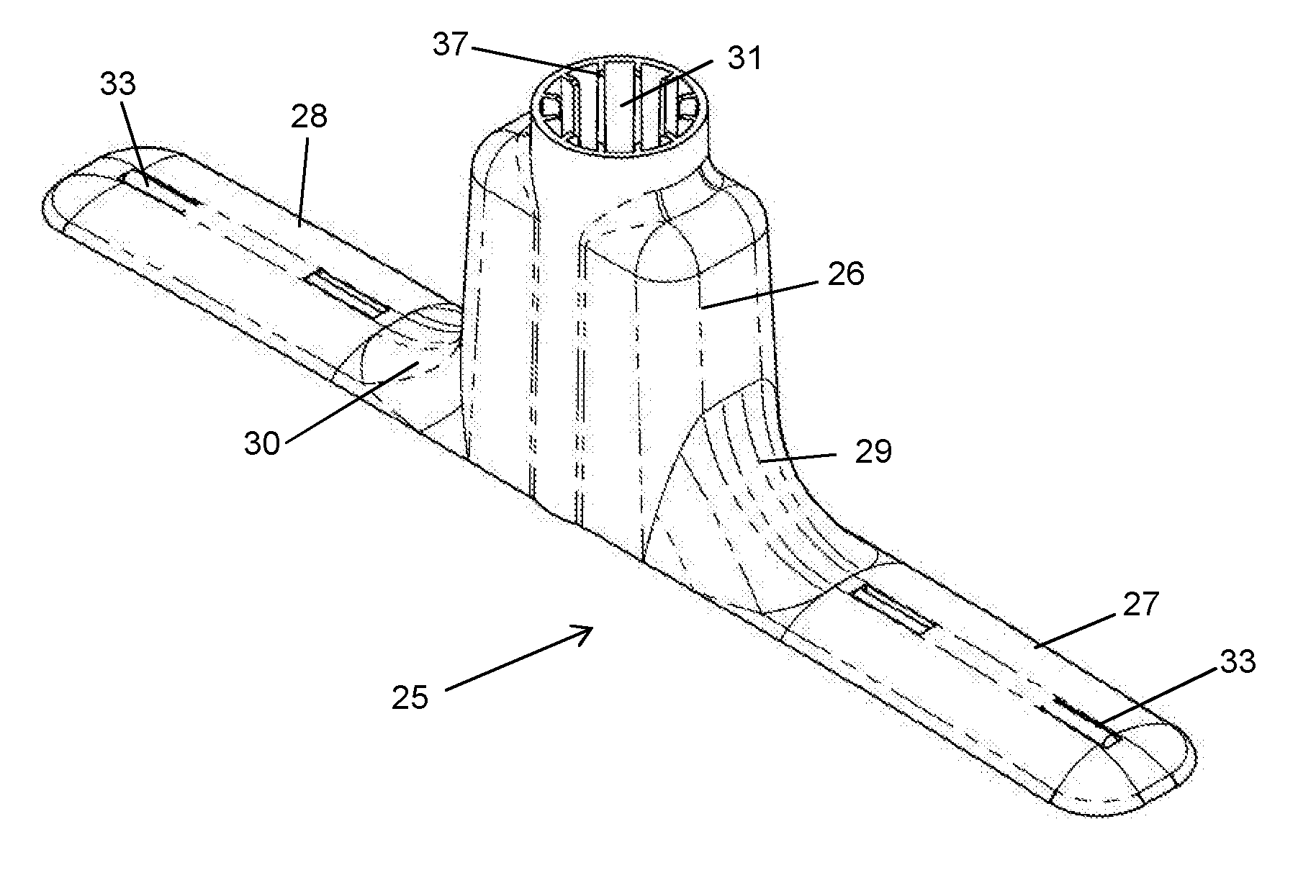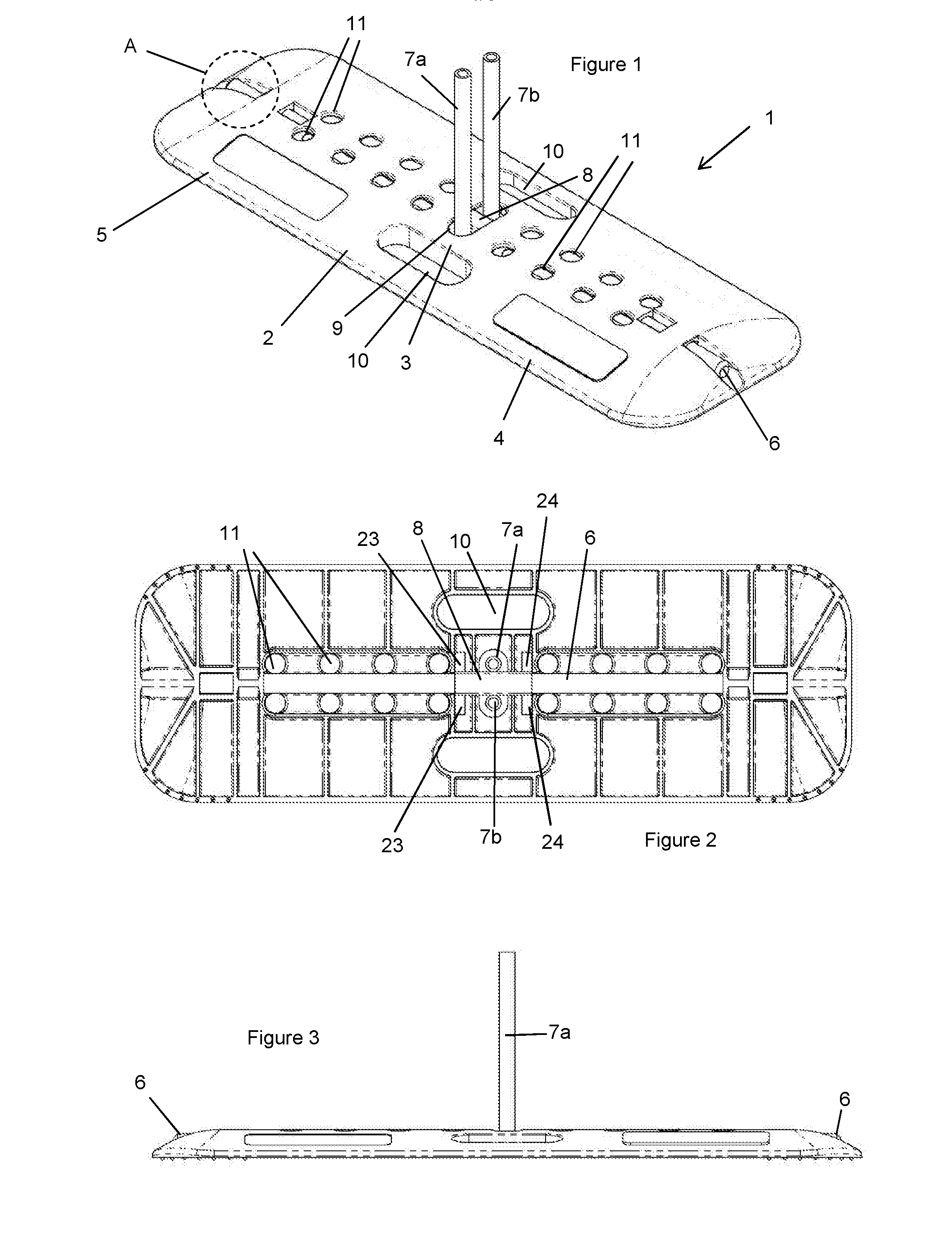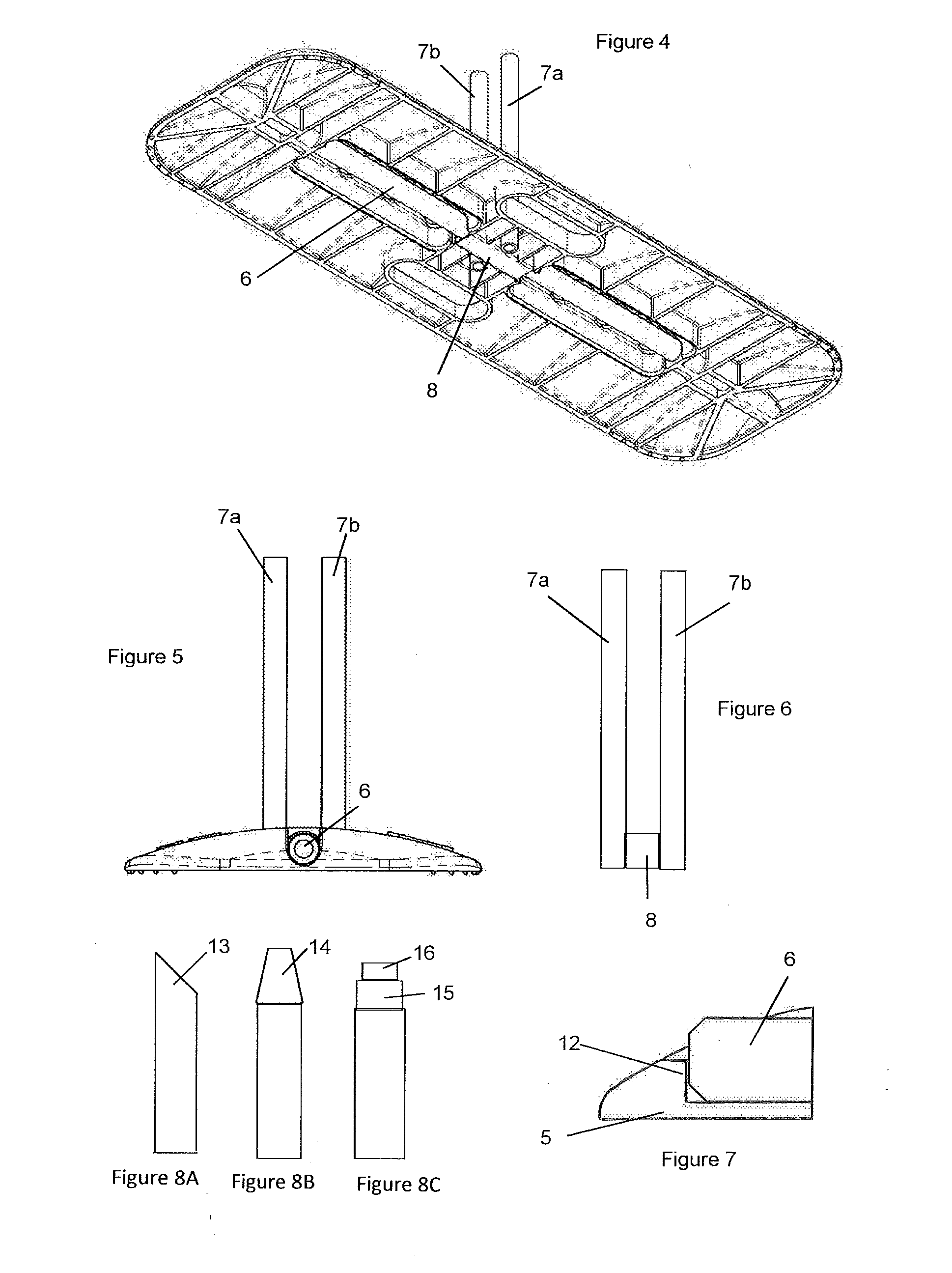Supporting temporary barriers
a temporary barrier and support technology, applied in the direction of traffic signals, applications, roads, etc., can solve the problem of pedestrians with a significant risk of tripping, and achieve the effect of reducing the danger of pedestrian tripping, low profile and low profil
- Summary
- Abstract
- Description
- Claims
- Application Information
AI Technical Summary
Benefits of technology
Problems solved by technology
Method used
Image
Examples
Embodiment Construction
[0060]Referring now in detail to the Figures, in FIGS. 1 to 7 there is shown a base 1 for receiving fence poles. This base comprises a molded part 2 of plastics, defining an integrally formed central support member 3, first stabilizing member 4 and second stabilizing member 5. The base 1 further comprises a stiffening rod 6 and a pair of metal spigots 7a and 7b projecting up from the support member. The metal spigots are connected, e.g. by welding to a hollow box section 8 and project upwardly through an aperture 9 in the support member. The stiffening rod 6 passes through and is connected to the stabilizing members 4 and 5 and passes through the hollow box section 8. The stiffening rod passes continuously from adjacent the free end of stabilizing member 4 to adjacent the free end of stabilizing member 5. The free end of FIG. 6 shows the metalwork used, comprising the spigots 7a, 7b welded to the box section 8.
[0061]The rod 6 is of fiber reinforced resin, manufactured by pultrusion....
PUM
 Login to View More
Login to View More Abstract
Description
Claims
Application Information
 Login to View More
Login to View More - R&D
- Intellectual Property
- Life Sciences
- Materials
- Tech Scout
- Unparalleled Data Quality
- Higher Quality Content
- 60% Fewer Hallucinations
Browse by: Latest US Patents, China's latest patents, Technical Efficacy Thesaurus, Application Domain, Technology Topic, Popular Technical Reports.
© 2025 PatSnap. All rights reserved.Legal|Privacy policy|Modern Slavery Act Transparency Statement|Sitemap|About US| Contact US: help@patsnap.com



